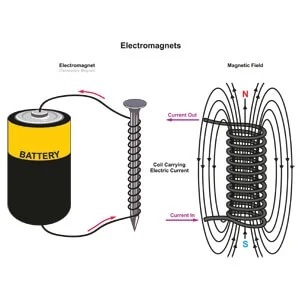What is an Electromagnet?

Listen to this Article
An electromagnet is a type of magnet that is created by an electric current flowing through a wire. Unlike permanent magnets that generate a constant magnetic field, the strength of an electromagnet can be regulated by controlling the flow of electric current. This ability to control the magnetic force is what makes electromagnets so useful and versatile.
The basic construction of an electromagnet consists of a wire made of conductive materials, such as copper or aluminum, wound around a magnetic core. The magnetic core is typically made of iron or another ferromagnetic material. When electric current flows through the wire, it generates a magnetic field around the wire. This magnetic field is amplified by the magnetic core, which creates a much stronger magnetic force.
One of the key advantages of electromagnets is their ability to offer precise control over the magnetic force. By varying the amount of current flowing through the wire, the strength of the magnetic field can be adjusted. This makes electromagnets incredibly useful in a wide range of applications, from electric motors and generators to MRI machines and particle accelerators.
Another advantage of electromagnets is their ability to be turned on and off quickly and easily. This makes them ideal for use in devices that require rapid changes in magnetic force, such as magnetic locks or brakes.
Aside from their practical applications, electromagnets have also contributed significantly to the development of physics and our understanding of the natural world. For example, scientists use electromagnets in particle accelerators to manipulate subatomic particles and study their behavior.
